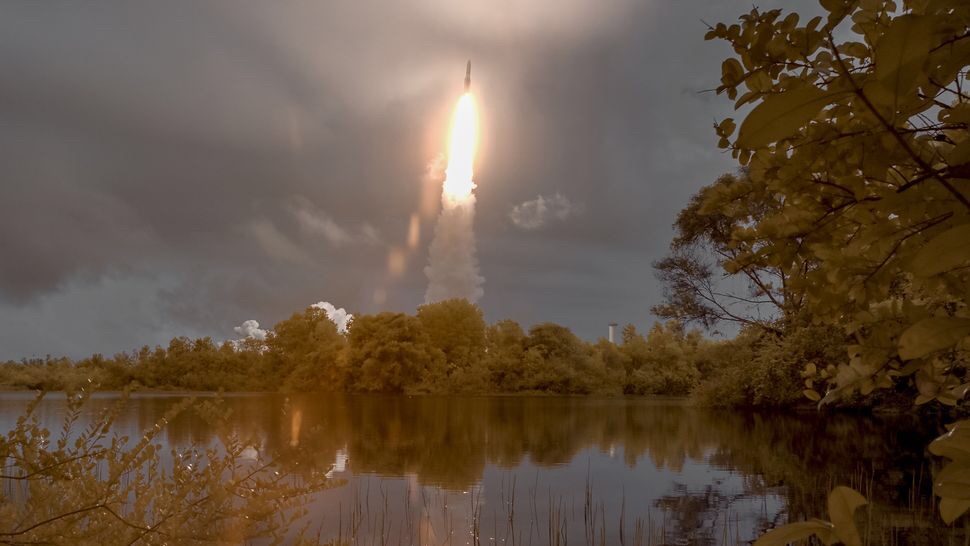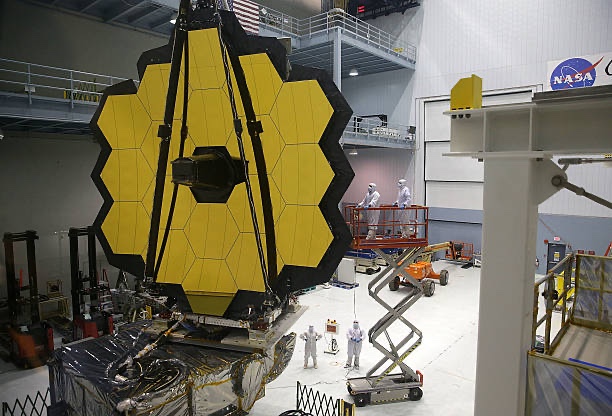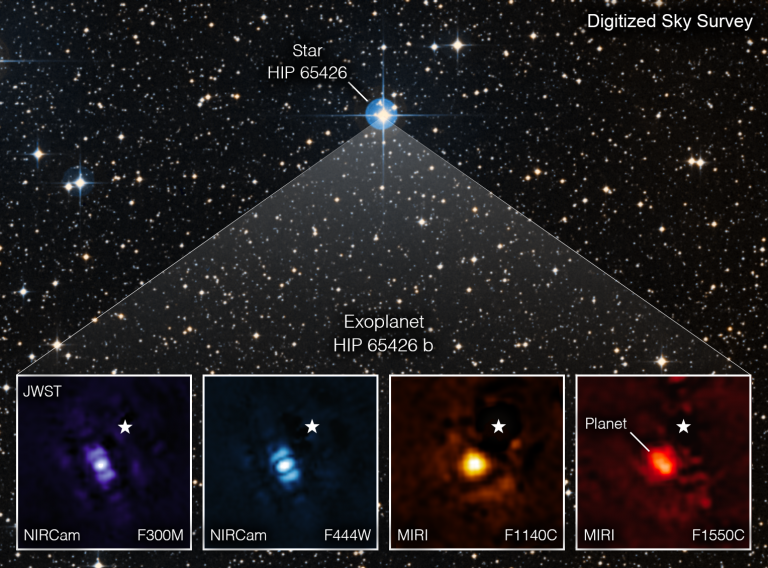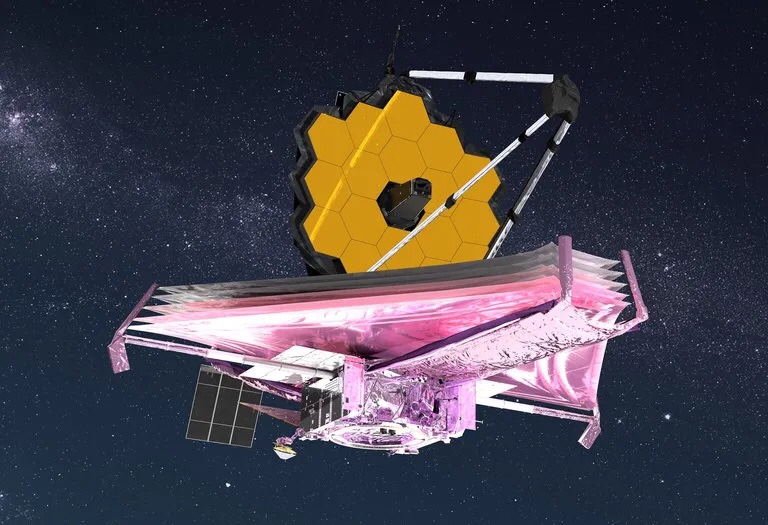The James Webb Space Telescope (JWST) is a powerful infrared telescope that was launched in December 2021. It is the most powerful and complex telescope ever built, and it is expected to revolutionize our understanding of the universe. One of the key goals of JWST is to study exoplanets, which are planets that orbit stars other than our own sun.
Importance of finding and studying exoplanets
Why are we so interested in finding exoplanets? There are a number of reasons why finding and studying exoplanets is important.
- To understand the formation and evolution of planetary systems: Exoplanets can provide insights into the different ways that planetary systems can form and evolve. For example, some exoplanets have been found orbiting in very tight orbits around their stars, while others have been found orbiting in very wide orbits. This diversity of exoplanet systems suggests that there is no single way that planetary systems form.
- To search for life beyond Earth: Exoplanets can provide potential targets for the search for life beyond Earth. For example, astronomers are particularly interested in finding Earth-sized exoplanets that orbit in the habitable zones of their stars. These are planets that are likely to have liquid water on their surfaces, which is considered to be a key ingredient for life as we know it.
- To learn more about our own planet: Exoplanets can help us to better understand our own planet, Earth. For example, by studying the atmospheres of exoplanets, we can learn more about the different ways that atmospheres can evolve. We can also learn more about the different types of planets that can exist in the universe.
ALSO READ : Trouble Aboard the ISS: NASA’s Cautious Approach to ISS Coolant Leak
Preview of how JWST will aid in this endeavor
JWST has a number of features that make it ideal for studying exoplanets. First, its infrared sensitivity allows it to see through the dust and gas that can obscure exoplanets from view. Second, its high-resolution imaging capabilities allow it to take detailed pictures of exoplanets. Finally, its spectroscopic capabilities allow it to analyze the atmospheres of exoplanets and look for signs of life.
Understanding Exoplanets
Definition and types of exoplanets
An exoplanet is a planet that orbits a star other than our own sun. Exoplanets come in a wide variety of sizes, masses, and compositions. Some exoplanets are similar to Earth, while others are very different. For example, some exoplanets are gas giants like Jupiter, while others are rocky planets like Earth.
Significance of exoplanet research
Exoplanet research is important for a number of reasons. First, it helps us to better understand the diversity of planets in the universe. Second, it could lead to the discovery of new worlds that are similar to Earth, and perhaps even habitable. Finally, studying exoplanets can help us to learn more about the formation and evolution of planetary systems, including our own.
The James Webb Space Telescope
Background and mission of JWST
JWST is a joint project of NASA, the European Space Agency (ESA), and the Canadian Space Agency (CSA). It is the largest and most complex telescope ever built, and it is expected to revolutionize our understanding of the universe.
JWST’s mission is to study the early universe, the formation of galaxies and stars, and the atmospheres of exoplanets. JWST is also expected to make new discoveries about dark matter and dark energy.
Key features and capabilities
JWST has a number of key features and capabilities that make it ideal for studying exoplanets. These include:
- Infrared sensitivity: JWST is sensitive to infrared light, which allows it to see through the dust and gas that can obscure exoplanets from view.
- High-resolution imaging: JWST has high-resolution imaging capabilities, which allow it to take detailed pictures of exoplanets.
- Spectroscopic capabilities:JWST has spectroscopic capabilities, which allow it to analyze the atmospheres of exoplanets and look for signs of life.
Launch and deployment

JWST was launched on December 25, 2021, from the Kourou Space Center in French Guiana. It arrived at its final destination, a point in space called Lagrange Point 2 (L2), in January 2022.
Techniques for Finding Exoplanets
There are a number of different techniques that astronomers use to find exoplanets. These include:
Transits and the transit method
The transit method is one of the most common methods for finding exoplanets. It involves looking for dimming of the light from a star as its planet passes between us and the star. When a planet transits its star, it blocks a small fraction of the star’s light. This dimming can be detected by telescopes on Earth.
The transit method is very effective at finding exoplanets that are orbiting close to their stars. However, it is not effective at finding exoplanets that are orbiting far from their stars.
Direct imaging
Direct imaging is another method for finding exoplanets. It involves taking pictures of exoplanets directly. However, this method is very challenging, and it can only be used to find exoplanets that are very large and bright.
Gravitational microlensing
Gravitational microlensing is a phenomenon that occurs when a massive object passes in front of a star and bends its light. This can cause the star to appear brighter for a short period of time. Astronomers can use microlensing to find exoplanets that are too small and faint to be seen with other methods.
Radial velocity method
The radial velocity method is a method for finding exoplanets by measuring the wobble of a star caused by the gravitational pull of its planet. As a planet orbits its star, it pulls on the star with its gravity. This causes the star to wobble slightly. Astronomers can measure the wobble of a star by observing its spectrum.
The radial velocity method is very effective at finding exoplanets that are massive and orbiting close to their stars. However, it is not effective at finding exoplanets that are small or orbiting far from their stars.
Importance of JWST in these techniques

JWST can play an important role in all of these exoplanet detection techniques.
- Transits: JWST’s high-resolution imaging capabilities can be used to measure the brightness of stars during transits with greater precision than previous telescopes. This allows astronomers to learn more about the size and composition of exoplanets.
- Direct imaging: JWST’s infrared sensitivity allows it to see through dust and gas that can obscure exoplanets from view. This makes it possible for JWST to directly image exoplanets that are too small and faint to be seen with other telescopes.
- Gravitational microlensing:JWST’s high-resolution imaging capabilities can be used to study the effects of gravitational microlensing on stars. This can help astronomers to learn more about the masses and distances of exoplanets.
- Radial velocity: JWST’s spectroscopic capabilities can be used to measure the radial velocity of stars with greater precision than previous telescopes. This allows astronomers to detect smaller and more distant exoplanets.
In addition, JWST can be used to characterize the atmospheres of exoplanets by measuring the composition and structure of their atmospheres. This information can be used to learn about the climate and habitability of exoplanets.
ALSO READ : JAMES WEBB SPACE TELESCOPE: COULD IT DETECT LIFE ON EARTH FROM ACROSS THE GALAXY?
JWST’s Role in Exoplanet Discovery
Advanced technology and instruments
JWST is equipped with a number of advanced technology and instruments that make it ideal for studying exoplanets. These include:
- Primary mirror: JWST’s primary mirror is the largest and most complex ever built. It is made up of 18 hexagonal segments that have been coated with a thin layer of gold. The primary mirror is responsible for collecting and focusing light from distant objects.
- Near-Infrared Camera (NIRCam): NIRCam is JWST’s primary instrument for imaging. It is sensitive to infrared light, which allows it to see through the dust and gas that can obscure exoplanets from view. NIRCam has a number of different imaging modes that can be used to study exoplanets in different ways.
- Mid-Infrared Instrument (MIRI): MIRI is JWST’s instrument for imaging and spectroscopy at mid-infrared wavelengths. It is sensitive to a wider range of infrared wavelengths than NIRCam, which makes it ideal for studying the atmospheres of exoplanets.
Characterizing exoplanetary atmospheres
JWST can be used to characterize the atmospheres of exoplanets by measuring the composition and structure of their atmospheres. This information can be used to learn about the climate and habitability of exoplanets.
JWST can measure the composition of exoplanetary atmospheres by observing the spectrum of light that passes through the atmosphere. The spectrum of light contains information about the different molecules that are present in the atmosphere.
JWST can also measure the structure of exoplanetary atmospheres by observing how the spectrum of light changes as it passes through the atmosphere. This information can be used to learn about the temperature, pressure, and density of the atmosphere.
Investigating potential habitability
JWST can be used to investigate the potential habitability of exoplanets by looking for signs of water and other molecules that are essential for life. JWST can also measure the temperature and pressure of exoplanetary atmospheres.
Water is essential for life as we know it. JWST can detect water vapor in exoplanetary atmospheres. JWST can also detect other molecules that are essential for life, such as oxygen, methane, and carbon dioxide.
The temperature and pressure of an exoplanet’s atmosphere are also important factors for habitability. JWST can measure the temperature and pressure of exoplanetary atmospheres with high precision.
Current Exoplanet Discoveries and Future Prospects

Notable exoplanets discovered so far
As of August 2023, over 5,000 exoplanets have been discovered. Some of the most notable exoplanets discovered so far include:
- Kepler-186f: Kepler-186f is the first Earth-sized planet discovered in the habitable zone of another star. It was discovered in 2014 by the Kepler Space Telescope.
- TRAPPIST-1e: TRAPPIST-1e is an Earth-sized planet that is one of seven planets orbiting a nearby star. It was discovered in 2017 by the TRAPPIST-1 telescope.
- Proxima Centauri b: Proxima Centauri b is an Earth-sized planet that orbits the nearest star to our own sun. It was discovered in 2016 by the European Southern Observatory’s Very Large Telescope.
These are just a few examples of the many exoplanets that have been discovered so far. As more exoplanets are discovered, we are learning more about the diversity of planets in the universe and the potential for life beyond Earth.
Anticipated findings and missions
JWST is expected to make a number of new discoveries about exoplanets in the coming years. Some of the anticipated findings include:
- The discovery of new Earth-sized planets in the habitable zones of other stars
- The characterization of the atmospheres of exoplanets
- The discovery of signs of life on exoplanets
JWST will also be used to support a number of future exoplanet missions, such as the Nancy Grace Roman Space Telescope and the James Webb Space Telescope Coronagraph Instrument.
Impact on our understanding of the universe
The discovery and study of exoplanets is having a profound impact on our understanding of the universe. It is challenging our traditional notions of what it means to be a planet and what it means to be habitable. It is also leading to new insights into the formation and evolution of planetary systems, including our own.
The discovery of Earth-sized planets in the habitable zones of other stars is particularly exciting. It suggests that the universe may be teeming with life. JWST is expected to play a major role in the search for life beyond Earth in the coming years.
Challenges and Limitations
Technical and observational challenges
The technical and observational challenges of exoplanet discovery can be broadly divided into two categories:
- Detecting exoplanets: This is challenging because exoplanets are typically very small and faint, making them difficult to see against the glare of their host stars. Additionally, many exoplanets orbit very close to their stars, making them even more difficult to distinguish.
- Characterizing exoplanets:Once an exoplanet has been detected, astronomers need to determine its mass, radius, composition, and atmosphere. This is also challenging, as exoplanets are so far away and difficult to observe directly.
Some of the specific technical and observational challenges of exoplanet discovery include:
- Sensitivity: Telescopes need to be sensitive enough to detect the faint light of exoplanets.
- Resolution: Telescopes need to have high enough resolution to distinguish exoplanets from their host stars.
- Contrast: Telescopes need to be able to overcome the glare of host stars in order to see exoplanets.
- Stability: Telescopes need to be stable enough to accurately measure the transit signals of exoplanets.
- Observing time: Long observing times are needed to detect faint exoplanets and to measure their transit signals.
Limitations of the JWST
The James Webb Space Telescope (JWST) is a powerful new telescope that is expected to revolutionize exoplanet research. However, JWST also has some limitations.
- Distance: JWST can only study exoplanets that are located within a certain distance of Earth. This is because JWST’s instruments are not sensitive enough to detect exoplanets that are further away.
- Dust and gas: JWST is not able to detect exoplanets that are hidden behind dust and gas. This is because JWST is an infrared telescope, and dust and gas absorb infrared light.
Despite these limitations, JWST is expected to make a number of important contributions to exoplanet research. JWST’s high-resolution imaging capabilities and spectroscopic capabilities will allow it to detect and characterize exoplanets that are too small and faint to be seen with other telescopes.
How are astronomers overcoming the challenges and limitations of exoplanet discovery?
Astronomers are overcoming the challenges and limitations of exoplanet discovery by developing new technologies and techniques. For example, JWST is a new telescope that has been specifically designed to detect and characterize exoplanets. Additionally, astronomers are developing new methods for analyzing data from exoplanet surveys.
These new technologies and techniques are helping astronomers to make new discoveries about exoplanets. For example, JWST has already detected its first exoplanet, and it is expected to discover many more in the coming years.
Conclusion
The James Webb Space Telescope (JWST) is a powerful new telescope that is expected to revolutionize exoplanet research. JWST has a number of features that make it ideal for studying exoplanets, including its high-resolution imaging capabilities, spectroscopic capabilities, and infrared sensitivity.
JWST is expected to make a number of important contributions to exoplanet research, including:
- Discovering new exoplanets, including Earth-sized planets in the habitable zones of other stars.
- Characterizing the atmospheres of exoplanets, including measuring their composition and temperature.
- Investigating the potential habitability of exoplanets, including looking for signs of water and other molecules that are essential for life.
The potential for groundbreaking discoveries
JWST has the potential to make a number of groundbreaking discoveries about exoplanets. For example, JWST could discover the first Earth-sized planet in the habitable zone of another star that has a breathable atmosphere. JWST could also discover evidence of life on exoplanets.
Encouragement for continued space exploration and research
The discovery and study of exoplanets is one of the most exciting areas of astronomy today. It is helping us to better understand our place in the universe and the potential for life beyond Earth.
The James Webb Space Telescope is a testament to the power of human ingenuity and our desire to explore the universe. JWST’s potential discoveries about exoplanets are just one example of the many amazing things that space exploration can teach us.
